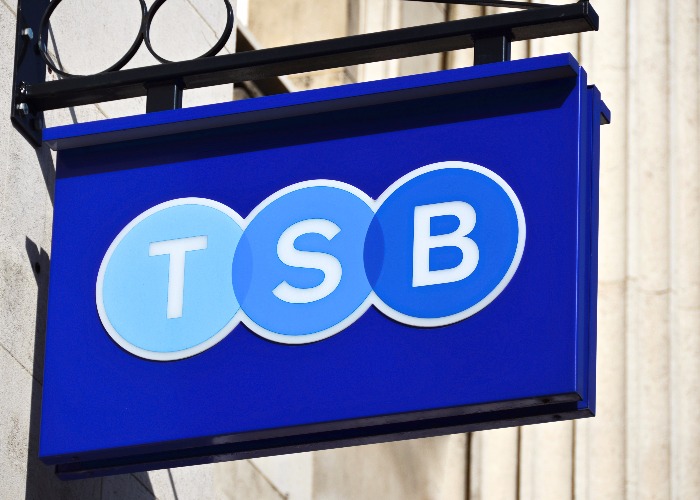Why the downfall of TSB is nothing to celebrate

The challenger bank had been a breath of fresh air before its IT nightmare.
It’s been an awful year for TSB.
Its attempted IT upgrade back in April was a horror show, with thousands of customers locked out of their accounts and unable to access their money, an issue which the bank admits still has not been fully rectified.
And now the chief executive Paul Pester, who has been heavily criticised for his handling of the IT fiasco, has stepped down with immediate effect, leaving the troubled bank to search for a new boss.
Fed up with your bank? Compare rival offerings
Tech troubles have trashed trust in TSB
The current account switching figures, issued each quarter by BACS, shine a light on just what a massive effect these tech problems have made on how happy people are to bank with TSB.
Back in the last quarter of 2017, TSB made a net gain of 13,064 bank account customers, making it the third most popular for switchers after Clydesdale Bank and Nationwide.
That’s quite the contrast from the first quarter of 2018 though, when TSB lost a net 5,126 customers.
That trend of losing customers is likely to continue too. A new survey from price comparison site GoCompare found that TSB is currently the least trusted UK bank, with around 16% of customers considering moving their money elsewhere.
If you aren’t happy, then move
I’m a big believer that when you aren’t happy with the service you’re receiving, whether it’s from your bank, broadband provider or anyone else, then you should move. Sending them a lesson by taking your business elsewhere is the best way to make a provider take notice of its customers.
So I can’t blame any TSB customer who has experienced the IT meltdown deciding to try their luck with someone else.
But I have to admit, I feel some genuine sadness at the apparent fall from grace of TSB and worry that the declining fortunes of the bank will put ordinary banking customers like you and me in a worse position.
Bringing an innovative approach
I don’t really like the term ‘challenger bank’ but it was an incredibly apt term for TSB, which adopted a genuinely innovative approach to its product design and service when it broke away from Lloyds back in 2013.
Take its Classic Plus Account, which at the time of launch paid a whopping 5% interest on balances of up to £2,000. At a time when savings account interest rates were at pathetically low levels, along came TSB with a bank account paying a beefy rate of interest.
Nationwide had an account paying the same rate, but the key difference here was that Nationwide’s rate only lasted for a year. TSB promised to pay that rate on an ongoing basis.
In addition, TSB was smart in offering a credit card tied to the bank account, which paid customers £5 a month each month in which they spent £500.
Many of the best cashback credit cards relied on people spending a significant amount each month in order to really get a return, but here was a dead simple way to enjoy £60 a year extra.
TSB was also one of the first banks to realise just how popular contactless payments were becoming and introduce a reward for customers who wanted to pay in this way.
That took the form of cashback on the first £100 in contactless payments, a further boost to your balance on top of that excellent interest rate.
One of the reasons that levels of bank account switching have been largely disappointing, even after the introduction of seven-day switching, is that so many of the accounts on offer are mediocre.
They are all largely the same, and as a result, people see little point in moving. But because TSB did something different, it gave people a reason to switch.
Unfortunately, now it’s given them an even stronger reason to move elsewhere.
Switch to a bank account that better meets your needs
What now?
Sadly for TSB, its name will be synonymous with IT troubles for the foreseeable future. And that will rightly put plenty of people off moving to the bank, no matter what clever ideas it comes up with for future products.
But I hope other banks who see themselves as challengers, outside of the banking giants, adopt a similar outlook to that which worked so well for TSB until its tech fell off a cliff.
Ultimately it’s ordinary banking customers that benefit when banks bring a fresh approach and launch incentives that people actually value, rather than the odd gimmicky freebie.
Most Recent
Comments
-
Odd interpretation of the facts - the TSB current account interest rate offer was the same as a previous Lloyds offer - nothing new there. I was with Lloyds and they moved me to TSB because the TSB branch was closer by about 50 yards, however it was out of town and in an area i never visited. I also had some payments into my account wrongly credited (long before recent probs, so luckily i closed the TSb account to go back to Lloyds (I never did). I do not understand why banks promote contactless - they introduced PINS, and then made it easy for thieves to bypass this. I am in the lengthy process of contacting all my card issuers and asking for contactless to be removed. I have used it twice On both ocassions the retailer took my card and then used it without my permission - never saw the amount that had been typed in. Lets be honest despite the PR TSB was just another bank. I cannot believe the chief exec (the buck stops here) is leaving with over a million payoff. An employee would have been sacked for a far smaller mistake with no payout
REPORT This comment has been reported.
Do you want to comment on this article? You need to be signed in for this feature









05 September 2018